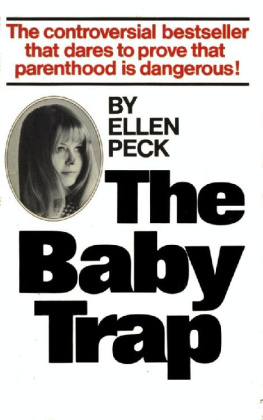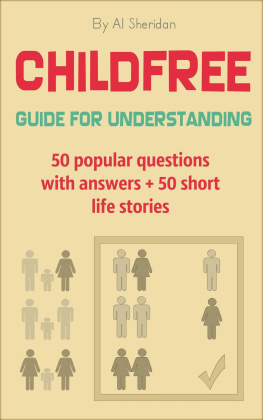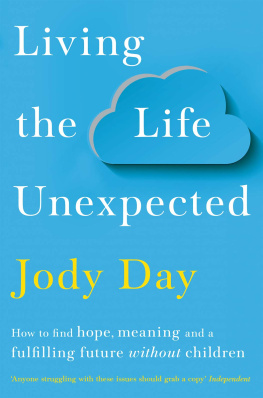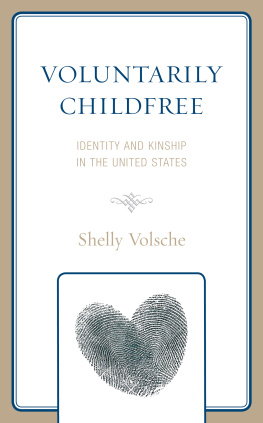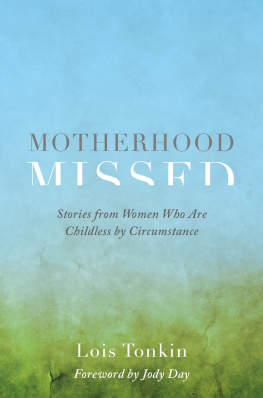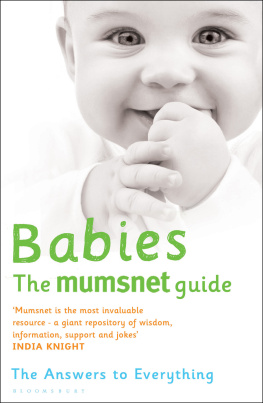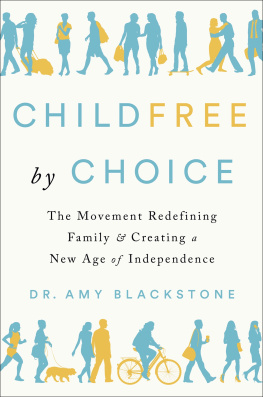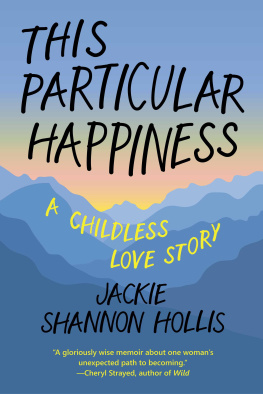Ellen Peck - The Baby Trap
Here you can read online Ellen Peck - The Baby Trap full text of the book (entire story) in english for free. Download pdf and epub, get meaning, cover and reviews about this ebook. genre: Home and family. Description of the work, (preface) as well as reviews are available. Best literature library LitArk.com created for fans of good reading and offers a wide selection of genres:
Romance novel
Science fiction
Adventure
Detective
Science
History
Home and family
Prose
Art
Politics
Computer
Non-fiction
Religion
Business
Children
Humor
Choose a favorite category and find really read worthwhile books. Enjoy immersion in the world of imagination, feel the emotions of the characters or learn something new for yourself, make an fascinating discovery.
- Book:The Baby Trap
- Author:
- Genre:
- Rating:5 / 5
- Favourites:Add to favourites
- Your mark:
- 100
- 1
- 2
- 3
- 4
- 5
The Baby Trap: summary, description and annotation
We offer to read an annotation, description, summary or preface (depends on what the author of the book "The Baby Trap" wrote himself). If you haven't found the necessary information about the book — write in the comments, we will try to find it.
The Baby Trap — read online for free the complete book (whole text) full work
Below is the text of the book, divided by pages. System saving the place of the last page read, allows you to conveniently read the book "The Baby Trap" online for free, without having to search again every time where you left off. Put a bookmark, and you can go to the page where you finished reading at any time.
Font size:
Interval:
Bookmark:
Ellen Peck has spent more than three years researching, writing arid lecturing on the subject of The Baby Trap. This breakthrough book examines the effects of children on the emotional balances of marriage.
The author of numerous articles on marriage, sexuality, ecology, adolescent life (and even on child raising) for such magazines as Pageant, Cosmopolitan, Teen and Today's Health, she has also appeared on countless nationwide television shows.
Her syndicated young-adult advice column appears regularly in fifty top U.S. newspapers. Recently Mrs. Peck aided in the founding of NON-the National Organization for Non-Parentsa new movement formed to implement the work of the ZPG, Planned Parenthood, and other concerned population and environment groups.
She and her husband childless by choice are representative of a new life style, based on the larger family of the community rather than the nuclear family. They travel extensively, work actively with young peoples groups and for political causes and candidates.
by
Ellen Peck
PINNACLE BOOKS NEW YORK CITY
THE BABY TRAP
Copyright 1971, J972 by Ellen Peck
All rights reserved, including the right to reproduce this book or portions thereof in any form.
A Pinnacle Book published by special arrangement with Bernard Geis Associates, Inc.
Cover photograph of Ellen Peck by Jim Co*.
This newly revised ond enlarged edition has been completely reset in a type face designed for ease of reading. It was printed from new plates ond contains the complete text of the original, high-priced edition.
First printing, May, 1972.
Printed in the United States of America
PINNACLE BOOKS, 1 16 East 27 Street, New York, N Y. 10016
I would really like to thank Dr. and Mrs. Carl Meador of the Center for Studies of the Person, La Jolla, California; Mrs. Virginia Satir, San Francisco; Dr. T. David Jansen, Dr. Joe Bressler, and Mrs. Betty Smith of the American Institute of Family Relations, Los Angeles; Dr. Irvin Cushner and Dr. Sanford Wolf of Baltimore; the Volunteer Welfare Services of Allegheny County, Pennsylvania; the Clergy Counseling Services of New York and Los Angeles; Mrs. Helen Gurley Brown and Cosmopolitan magazine; Mrs. Bobbie Anker of the California Abortion Counseling Service; the Planned Parenthood offices of New York, Washington, and Baltimore; Mrs. Vivian Washington of Baltimore; Mrs. Oscar Carlson, Merrill Lynch, Pierce, Fenner, & Smith, Baltimore; the Child Welfare League of America and the National Council on Illegitimacy, New York; Mr. John R. Rague, Executive Director, Association for Voluntary Sterilization, New York; the Free Clinic of Georgetown; Dr. David Shaw, Peoples Free Clinic, Baltimore; Mr. Stewart Ogilvy of the Campaign to Check the Population Explosion, New York; Mr. Eugene Coan, Director of Political Activity, Zero Population Growth, Los Altos, California; the Population Crisis Committee, Washington, D.C.; Mr. and Mrs. Lowell Dodge, Washington, D. C.; Drs. Rustum and Della Roy, State College, Pennsylvania; Mr. Dan Thomas and Mr. Mayer Kalichman, Baltimore; Marion Holmes, New York; Pat Clarke, Baltimore; Joyce Jensen, San Francisco; as well as those lawyers and counselors interviewed who preferred to remain unmentioned in this study.
Id also like to thank the following couples, from among those interviewed, for outstanding help: Jim and Nancy Cox; Neil and Alice Bernstein; Larry and
Ellen Muir; Gail and Paul Blaisdell; Carole Ann and Jack Tucker; Barbara and Tony Robson; Susan and Clayton Root; Joe and Joyce Raffaelle; Joe and Dianne Sullivan; Rex and Diane Roupe; Bob and Linda Elkman.
Most especially, thanks to Mr. Jay Allen, Los Angeles; Mr. Nathaniel Branden, Director, Institute of Biocentric Psychology, Los Angeles, and his wife Patrecia; Stephanie Mills and Earth Times magazine, San Francisco; Mr. Arnold Zerwitz and Mr. Allen Spector, Baltimore; and Drs. David and Helene Zagier, Hospital Psychiqtrique de Malevoz, Monthey, Switzerland.
IN THE TIME OF YOUR LIFE. LIVE...
In the time of your life, live
so that in that wondrous time
you shall not add to the misery and sorrow
of the world,
but shall smile to the infinite delight and mystery of it.
From The Time of Your Life by William Saroyan
Near the small French town of Saint-Denis-sur-Loire is a certain chateau. It is not particularly distinguishedmerely one among many of those collections of architectural magnificence that make one imagine that a thousand kings must have lived along the Loire River.
This chateau was built in the 1100s, and has been in our family since 1340, explained the elderly countess, who was standing with us, overlooking a moat rich with black fish and green water plants. Beyond the moat, their lands sloped down toward the Loire. A gardener was picking strawberries. It was not too difficult to imagine that this might be, once more or still, a day in the 14th century. Of course, the physical structure of the buildings had changed; the countess was explaining this ...
I was listening to a retired French Army officer,
General de la Ferte, who was talking about Indochina, his friendship with Charles de Gaulleand about hunting. He has a collection of hundreds of hunting books, one printed in medieval times and giving instructions for the netting of game birds. They used to net birds rather than aim at them with weapons, he explained. I hadnt known that, I said.
But I was trying to overhear what the countess was telling my husband...
There formerly were three drawbridges, not two, she was explaining, and another turretthere. A building to the far left replaced one destroyed during the Napoleonic wars...
With each feudal conflict, and with each modern war (the chateau itself had been occupied and damaged during the Nazi invasion), there had been changes, but only to the buildings. The heritage of this estate was intact, as was the beauty of the lands.
And the experience of talking with the Comtesse de Beaucorps, whom we had met the previous week in Blois, and the chance to meet her other guests, was actually a momentary sharing of that heritage. It was an experience that we shall treasure for a very long time.
Other days were memorable that summer.
We had Chateaubriand and champagne at the Tour dArgent in Paris, then abandoned the Fodor guide in favor of the Peck plus Peugeot Plani.e., just driving. We listened to records in a dusty Dijon cafe and to a folk singer in a park by Lake Geneva. We slept for several nights in a small, out-of-the-way chalet that looked upand downat glaciers, mountains, waterfalls the height of mountains.
We picnicked on truffle-spiced ham, fruit, brioches, and ice-cold champagne by a roadside in the south of France. We tasted the black Chambertin wine in a cave of the Burgundy country. We toured the oldest hospital in the world that still receives patients (the nurses still wear medieval dress; though the doctors, I think, use modern methods). We saw the Musee Picasso at Cap dAntibes, along the French Riviera.
The night of our fifth anniversary we were in 10
Liechtenstein and the next night in a castle still complete with its Louis Quinze furnishings.
Once, while hiking along a high trail in the Bernese Oberland, we exchanged tentative German words with a shepherd and shared raclettes with him as we watched a sunset so beautiful that it was difficult to find any words to say in any language.
We wandered through the private art galleries of several cities: Lucerne, Paris, Geneva, Barbizon. We climbed two or three mountains. We met Marc Chagall.
And, once we wandered onto a street fair in Berne.
Just down from the mountains of Switzerland, we parked our Peugeot facing the Bernese clock tower. Clock tower, though, fails completely to describe what we saw. It more resembled the sun, this clock-huge, gold, hypnotic, seeming to sit low, just a story above the street, surrounded by the signs of the stars and the planets. It was not just a clock that told the time of day. It seemed quite as capable of inspiring devotion and superstition as the pale, real sun that was then setting behind the hills behind the town.
Font size:
Interval:
Bookmark:
Similar books «The Baby Trap»
Look at similar books to The Baby Trap. We have selected literature similar in name and meaning in the hope of providing readers with more options to find new, interesting, not yet read works.
Discussion, reviews of the book The Baby Trap and just readers' own opinions. Leave your comments, write what you think about the work, its meaning or the main characters. Specify what exactly you liked and what you didn't like, and why you think so.

